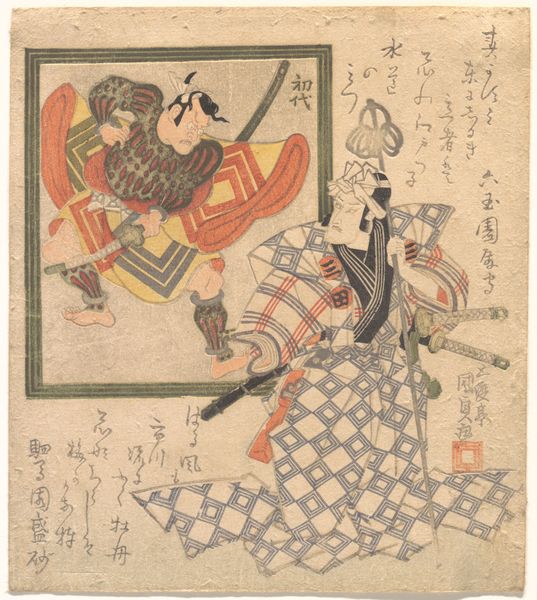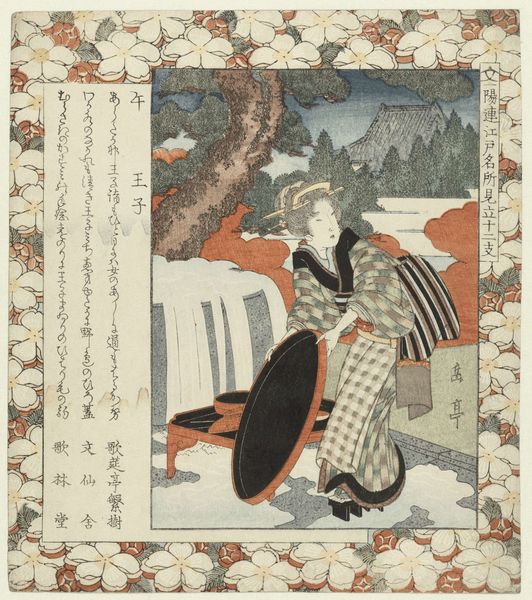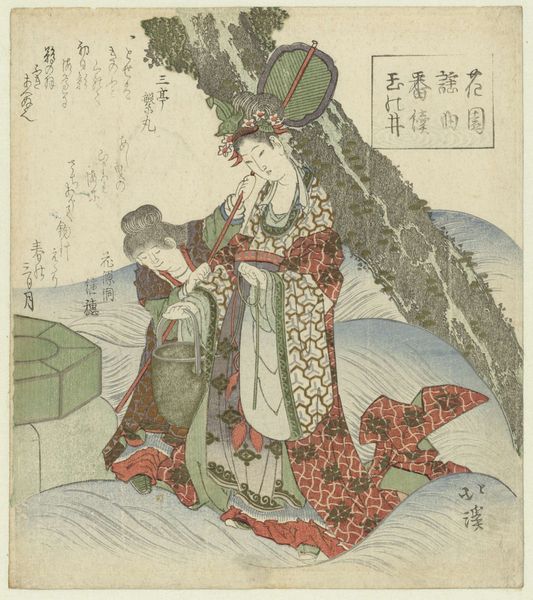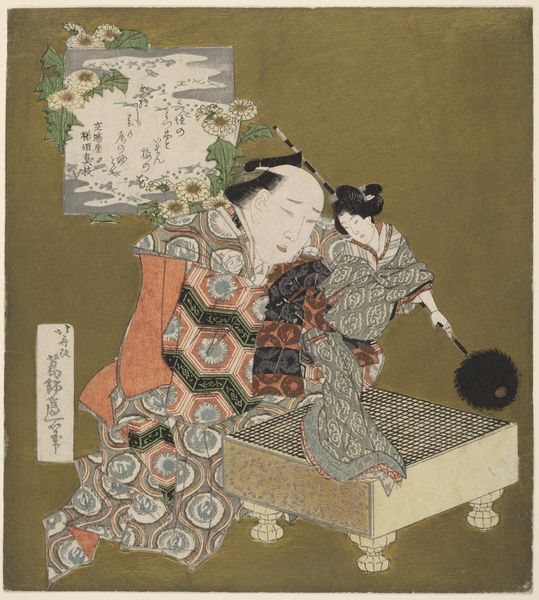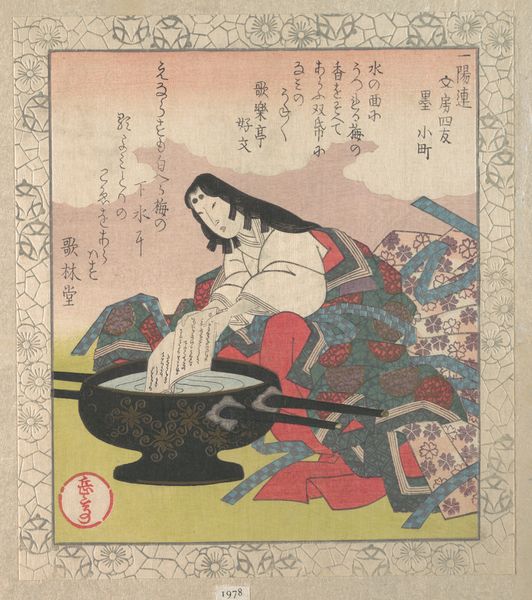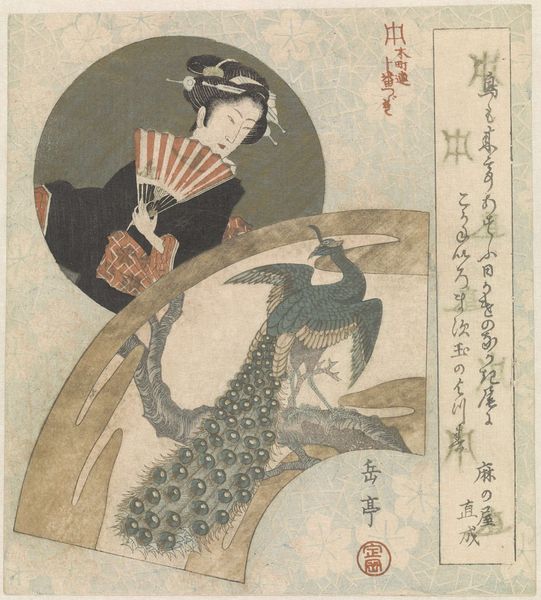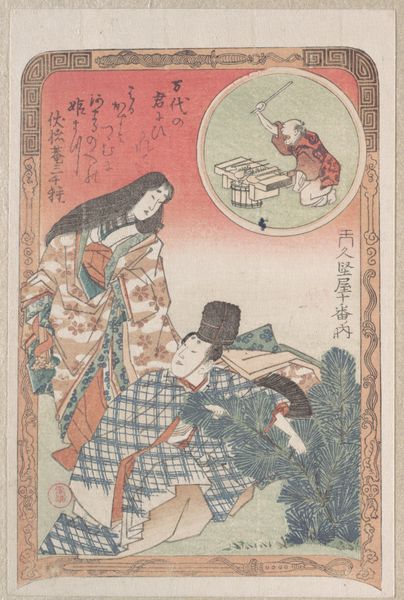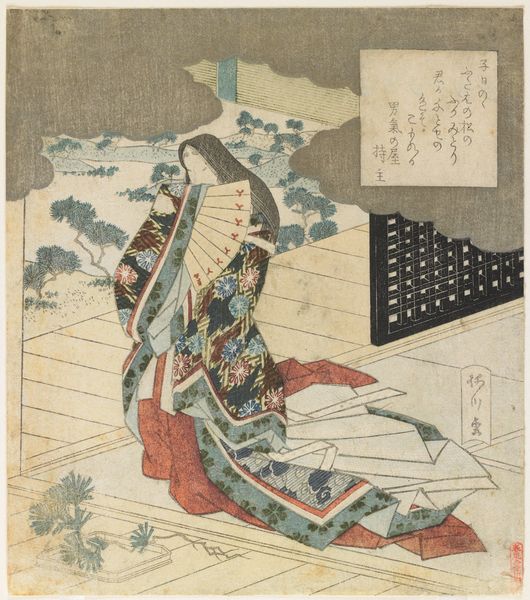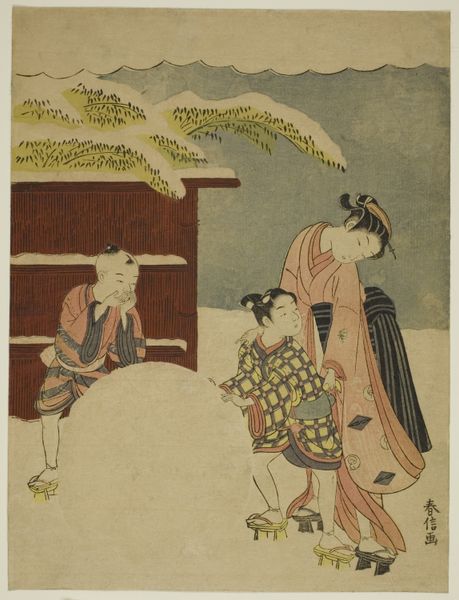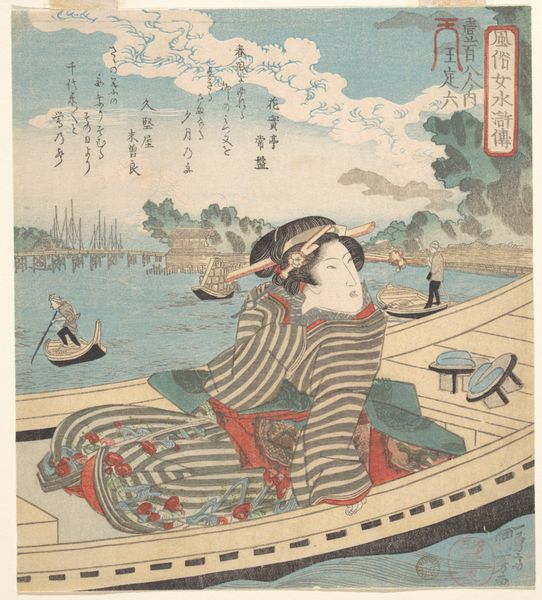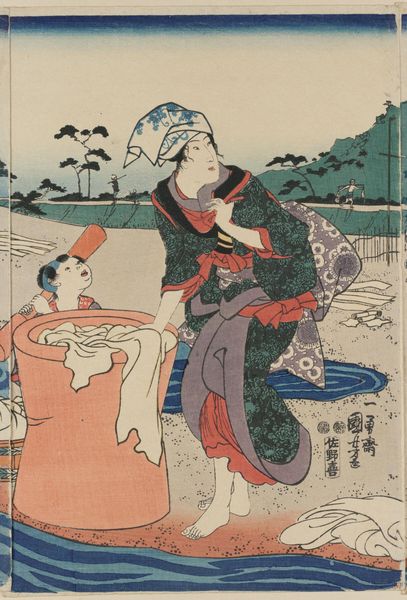
The Chinese Calligrapher Boying (Japanese: Hakuei; also known as the “Sage of Cursive Script”); “Inkstone” (Suzuri), from Four Friends of the Writing Table for the Ichiyō Poetry Circle (Ichiyō-ren Bunbō shiyū) From the Spring Rain Collection (Harusame shū), vol. 1 1817 - 1837
0:00
0:00
#
portrait
#
muted colour palette
# print
#
asian-art
#
ukiyo-e
#
japan
#
men
#
calligraphy
Dimensions: 8 x 7 1/8 in. (20.3 x 18.1 cm)
Copyright: Public Domain
Curator: This print, created between 1817 and 1837 by Yashima Gakutei, offers a glimpse into the world of Japanese calligraphy and artistry. It's titled "The Chinese Calligrapher Boying (Hakuei), also known as the 'Sage of Cursive Script'; 'Inkstone' (Suzuri)." Part of a series called "Four Friends of the Writing Table." Editor: Immediately, I’m struck by the composition. The red geometric structure holding his tools sits juxtaposed with a much looser, flowing landscape. The whole scene gives a sense of almost domestic grandeur… a writing desk fit for a king or a particularly esteemed scholar. Curator: Exactly. It’s fascinating to see the importance placed not just on the act of writing, but on the tools themselves. Look at the details given to the inkstone, for example, and consider how this piece celebrates both the aesthetic and functional aspects of the writer's craft. Editor: Absolutely. It makes me consider the relationship between the hand, the tool, and the surface. The paper is a key element— the blank space waiting to receive the mark, the inscription. You can see how Gakutei understands that these components are inseparable parts of one creative whole. Also the ink, it would be interesting to understand where the different elements where sourced from, the paper, the charcoal... and from the way it's been composed into the landscape it almost feels as if they are elements themselves. Curator: It is a beautiful detail that the desk appears so close to nature, suggesting that to be creative is not just to follow practice or study; creativity needs immersion with the world and contemplation. Notice how the palette is deliberately soft. The muted tones don’t distract from the calligrapher, even though his garb is rich and detailed. I’m particularly fond of how the misty blues in the background emphasize the subject's solitude, focusing on his genius. Editor: Yes! Those misty blues contribute to the sense of artistic space. It elevates what could have been just a portrait into something transcendent: an active intersection between tools, makers, and nature. Considering where the original artwork is stored: "The Metropolitan Museum of Art" you feel that in being shown in this context, it loses part of its own value to be hung amongst its peers of artistic works rather than staying among its fellow materials. Curator: An interesting paradox, isn't it? I like to imagine what the members of the Ichiyō Poetry Circle thought about all those notions we shared just now when looking at this artwork together. Editor: Well, I feel like I understand how something so functional like a printing press or piece of calligraphy can hold such a status of power, something as a result of practice becomes sublime art.
Comments
No comments
Be the first to comment and join the conversation on the ultimate creative platform.
